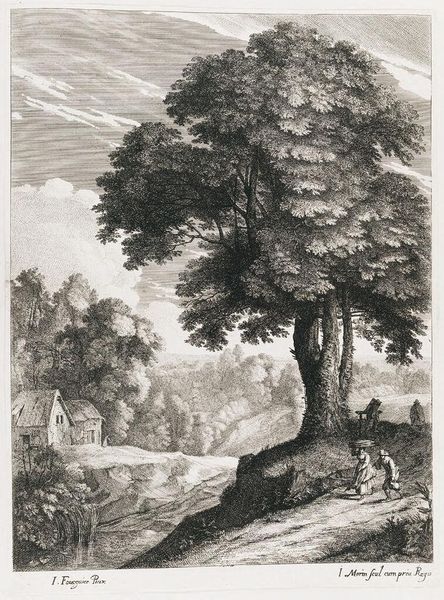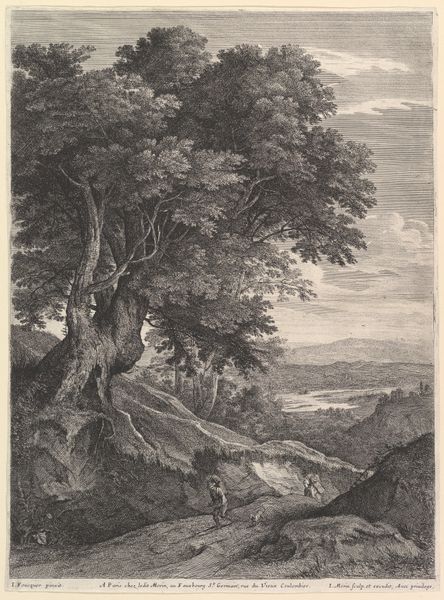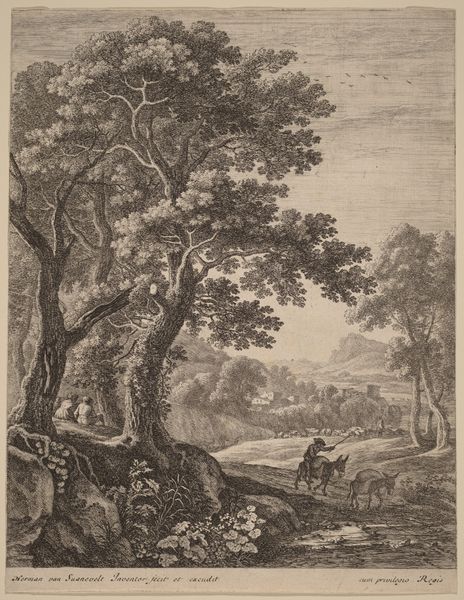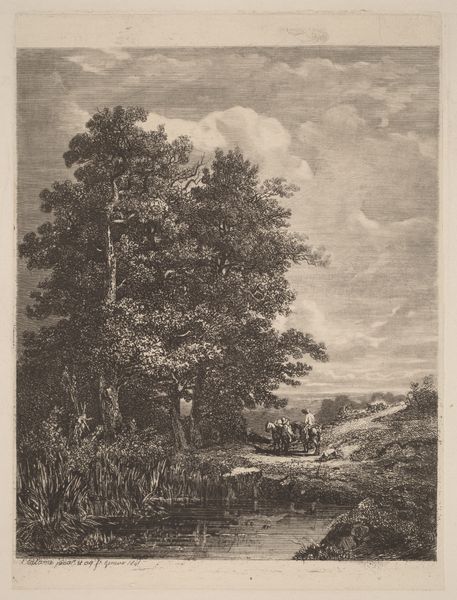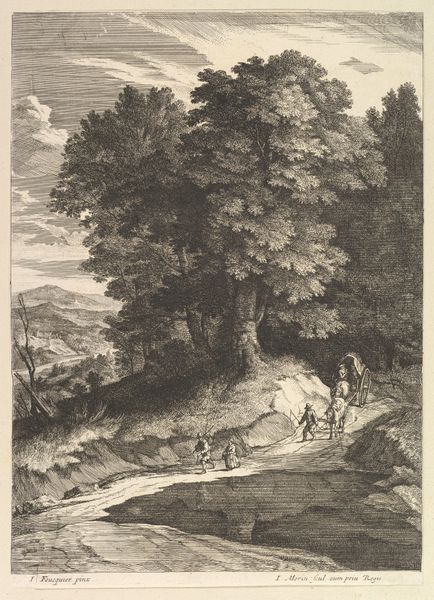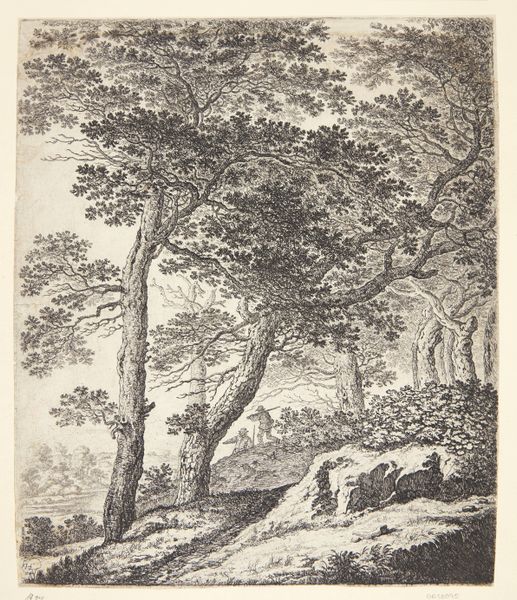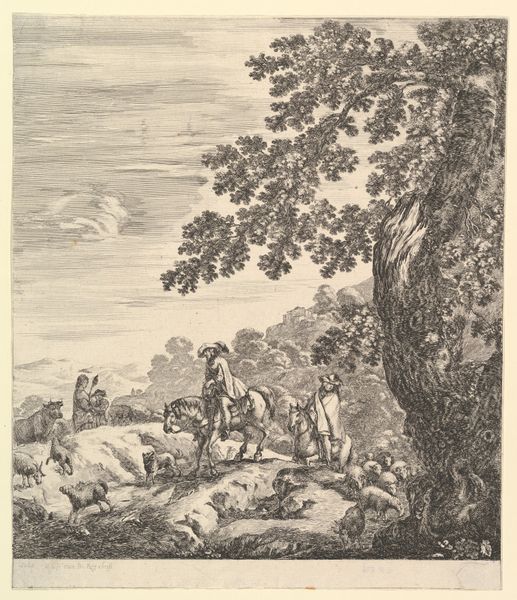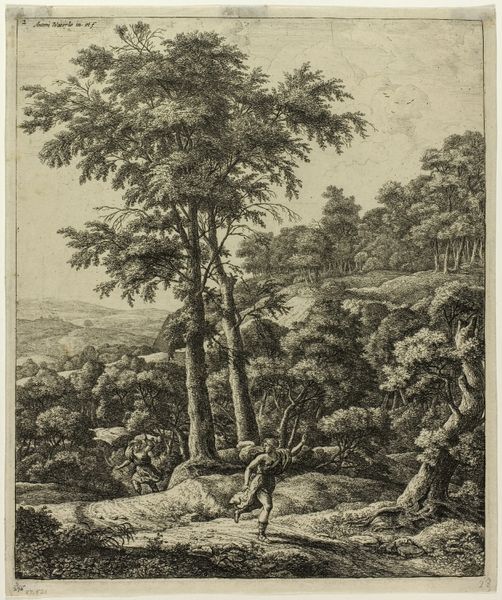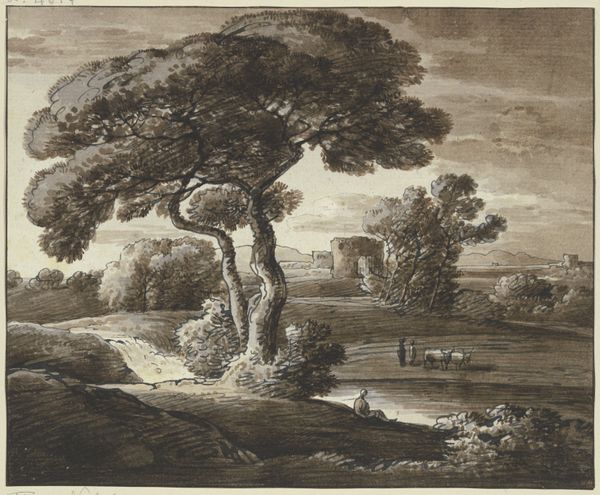
drawing, print, engraving
#
drawing
#
baroque
# print
#
landscape
#
engraving
Dimensions: sheet: 16 5/16 x 12 1/8 in. (41.4 x 30.8 cm) image: 15 1/4 x 11 1/8 in. (38.8 x 28.2 cm)
Copyright: Public Domain
Curator: Ah, "Les Deux Chaumières," or "The Two Cottages." This engraving, dating roughly between 1605 and 1650, is attributed to Jean Morin and resides here at The Met. Editor: Immediately, I'm struck by how peaceful it is, almost meditative. That dominant tree, it feels like a protective elder watching over the tiny figures. And those figures – a quiet intimacy emerges, in monochrome, which is just magical. Curator: Baroque landscapes were fascinating. This image blends observations of nature with a growing idealization. Landscape wasn't merely backdrop; it reflected social and political realities, often signaling an aristocratic mastery over land. It represents a sort of idyllic possession. Editor: That’s a bit bleak though, isn't it? While I appreciate the power structures embedded, there’s also an intimate connection to the land present. Look at the light playing on the leaves, or how the cottages nestle into the hillside. I mean, there's such careful rendering of everyday life. Do you really think that an engraver working at that time wasn't really concerned with such earthly stuff? Curator: Well, consider the audience. Prints like these were accessible. So while it romanticized rural life, that life remained largely inaccessible for most. Think about it—how does the romanticizing in art and literature serve to placate real struggles and challenges by the people? It asks to contemplate, perhaps, why these images of harmony are presented at such a time. Editor: Hmm, valid. But still, the simple dignity the artist gives these folk...it's tender. Not sure I buy the artist entirely, as an instrument. More like an observer. Curator: Observation never comes from a neutral space, however. In truth, prints helped construct our very ideas about nature. Think about tourism’s impact later on. I can also offer the opinion, however, that Morin offers something truly innovative, like an atmospheric approach to rendering texture that moves beyond that conventional way of thinking of these rural places at that point in time. Editor: Maybe that tree’s also a quiet rebel, sheltering the common folk in its shade while politely nodding to its patron. Perhaps that artist would just prefer painting its inner life—so often the true resistance is hidden. What do you know? It all goes on and on! Curator: And those cottage dwellers and rural landscapes are bound by economic and ecological conditions. That can also affect any artwork. Anyway, something to mull over while moving along! Editor: Agreed! Let's let it all sink in before we rush on to the next thing.
Comments
No comments
Be the first to comment and join the conversation on the ultimate creative platform.

